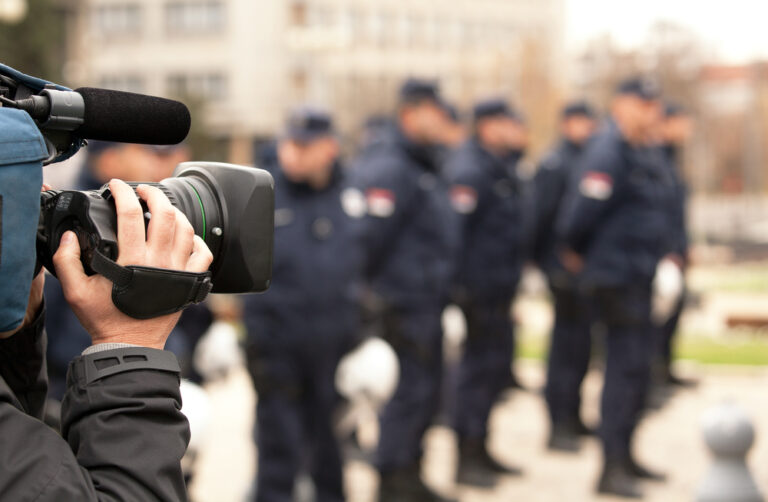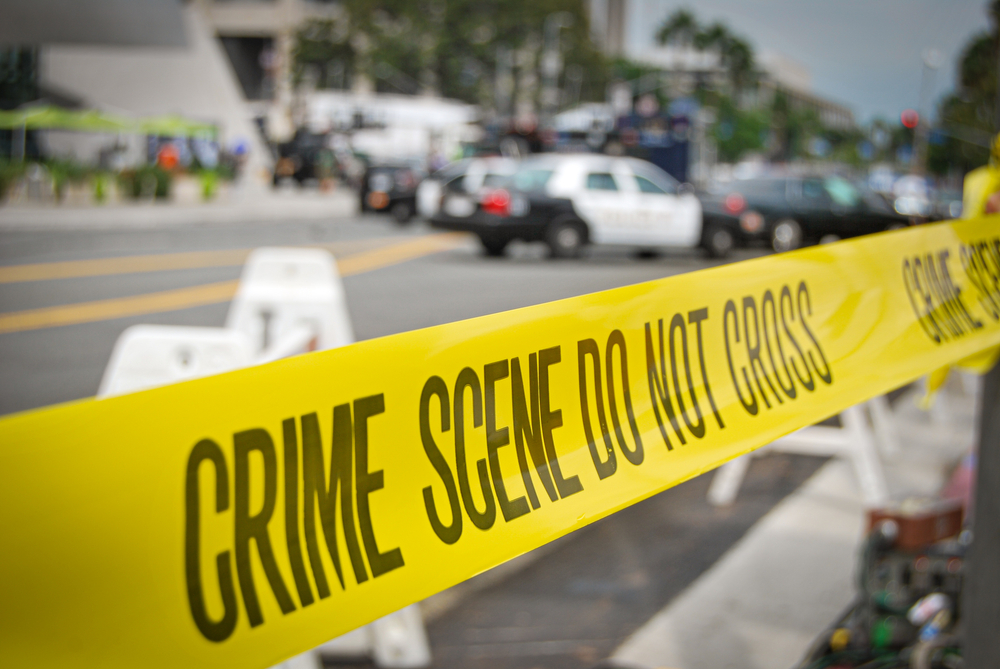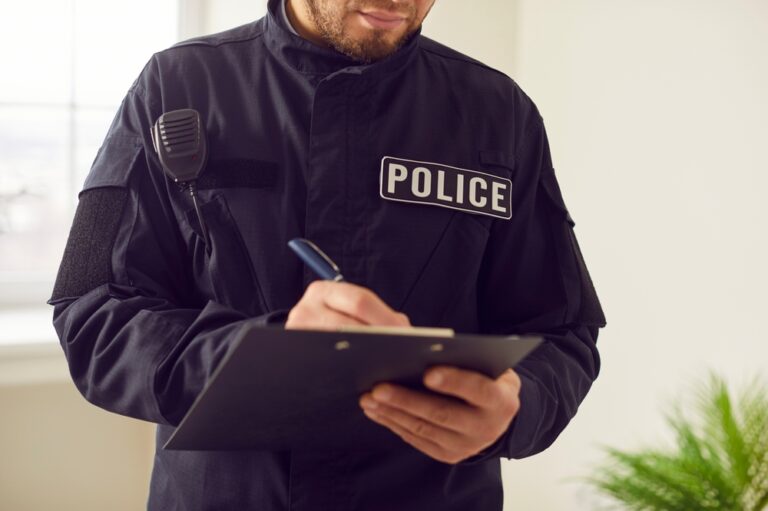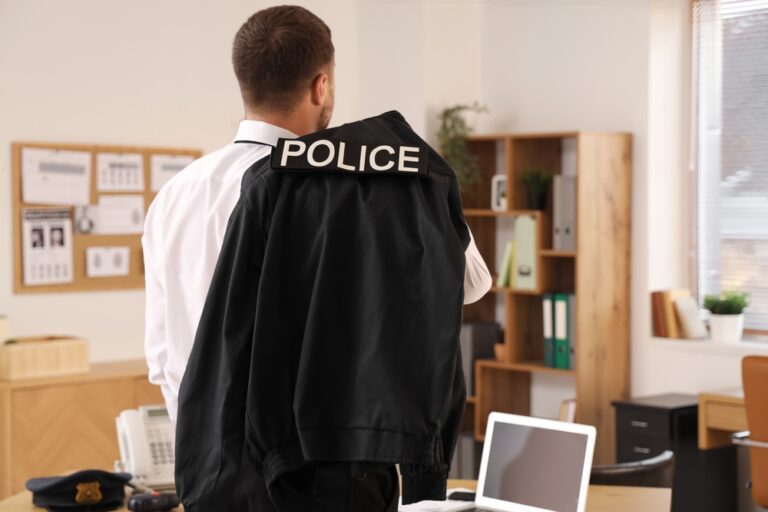
Media Interaction: A Skill for Police Professionals
The police are called daily regarding various incidents of public interest. It is our responsibility to provide the…

Police tape, commonly known as crime scene tape, is an important tool used by law enforcement to secure and isolate a crime scene. When a crime occurs, the area where it happened becomes a critical zone for investigators to meticulously gather evidence and piece together the sequence of events.
The primary purpose of police tape is to protect and preserve the integrity of the crime scene throughout the investigation process. It is typically made of brightly colored, non-adhesive material, with the text “Police Line – Do Not Cross” or “Crime Scene,” making it easily identifiable to the public and unauthorized individuals.
By cordoning off the crime scene, police tape establishes a clear and defined boundary that separates the area of interest from its surroundings. This is crucial for preventing contamination, as it ensures that only authorized personnel, such as investigators and forensic experts, have access to the area.
Preserving the integrity of evidence is of utmost importance in any investigation. Police tape plays a vital role in this aspect, as it helps prevent accidental or deliberate destruction of evidence. By keeping unauthorized individuals away, it ensures that evidence remains undisturbed until properly documented and collected.
There are several different types of police tape used in law enforcement investigations.
Crime Scene Tape: The standard and most recognizable type, marked with “Police Line – Do Not Cross” or similar warning messages, used to secure the perimeter of a crime scene.
Biohazard Tape: Used to mark areas with potential biological hazards, such as dangerous materials or contamination sites.
Hazardous Material (HAZMAT) Tape: Specifically used to cordon off areas containing hazardous materials or substances.
Restricted Access Tape: Indicates areas with limited access due to ongoing investigations or safety concerns.
Do Not Enter Tape: Signals areas that are off-limits for entry due to safety, security, or ongoing law enforcement operations.
Forensic Evidence Tape: Used to mark and protect specific pieces of evidence within a crime scene.
Fire Line Tape: Typically used by firefighters to close off areas affected by fire or during firefighting operations.
Traffic Control Tape: Helps direct and control vehicle or pedestrian traffic at the scene of an incident.
Search Area Tape: Used in search and rescue operations to designate areas that have been searched or are yet to be searched.
Note that different law enforcement agencies and jurisdictions may have variations or specific designs for these types of police tape. However, the primary purpose remains consistent – to communicate boundaries while ensuring safety and security at various locations and situations.

If a civilian crosses or removes police tape from a crime scene or restricted area without proper authorization, they can face various legal consequences. Potential charges include:
The severity of these charges and potential penalties may vary based on the jurisdiction, the extent of the tampering, and whether any additional crimes were committed during the act. Penalties can range from fines and probation to imprisonment, depending on the specific laws and the seriousness of the offense.
It is essential for everyone to respect the boundaries established by police tape and to follow instructions from law enforcement at the scene. If you come across a potential crime scene, you should immediately report it to the authorities and avoid tampering with any potential evidence. Respecting the integrity of a crime scene is crucial in supporting a fair and effective investigative process.
The sight of police tape instantly alerts us to an incident or crime scene, stirring up a mix of emotions – intrigue, curiosity, or even dread. When it’s red, the reaction can be even stronger, as we associate red with danger and fatality.
The primary purpose of red police tape is similar to other types of police tape, which is to restrict access and preserve the integrity of a crime scene. It serves as a visual deterrent to keep people away from sensitive areas and from tampering with evidence.
However, it’s important to remember that the meaning of police tape colors can vary based on local law enforcement practices. Therefore, it’s best to interpret the presence of any police tape as a sign of caution, and respect the boundaries set therein.

It doesn’t exclusively signify death. Red tape is commonly used in high-risk situations like bomb threats, chemical hazards, or major crime scenes, which may or may not involve death. Understanding its purpose helps us respond appropriately and cooperate with law enforcement for public safety and effective investigations. Remember, police tape is a vital tool for maintaining order and protection.
Green police tape serves a specific purpose in law enforcement by isolating areas that don’t pose an immediate danger to the public. Unlike yellow or red tape that may signify more severe situations, green tape is used in scenarios where there is no imminent threat to safety but still requires limited access.
Green police tape is commonly used in the following situations:
The use of green police tape in less severe situations provides several benefits:
Despite its advantages, law enforcement agencies face some challenges and misconceptions when using green police tape:
Green police tape has its role in the color-coded system used by law enforcement agencies around the world. It allows officers to manage less severe situations without causing unnecessary alarm or panic. It is employed in various scenarios, including traffic accidents, public events, lost property cases, search and rescue missions, and training exercises.
Despite its many advantages, challenges such as public awareness, misuse, and availability remain. Therefore, it is important that law enforcement agencies educate the public on the meaning and purpose of green police tape. In doing so, they can continue to effectively manage situations and maintain public safety while minimizing confusion and panic.

The police are called daily regarding various incidents of public interest. It is our responsibility to provide the…

Many police officers experience terrible, traumatic events in the line of duty. A significant number of police officers…

In the challenging and constantly demanding world of law enforcement, police officers navigate through lots of situations. We’re…